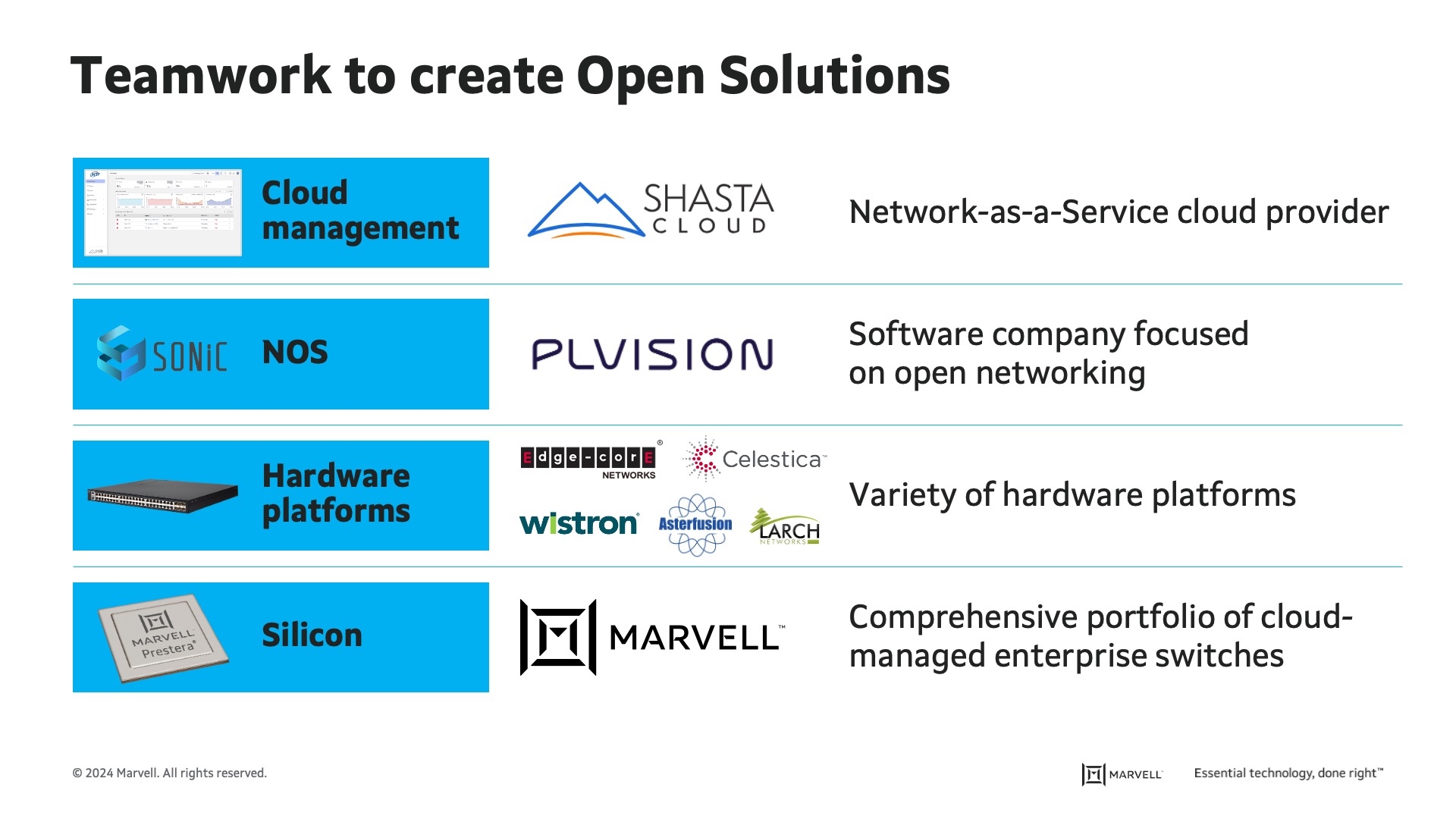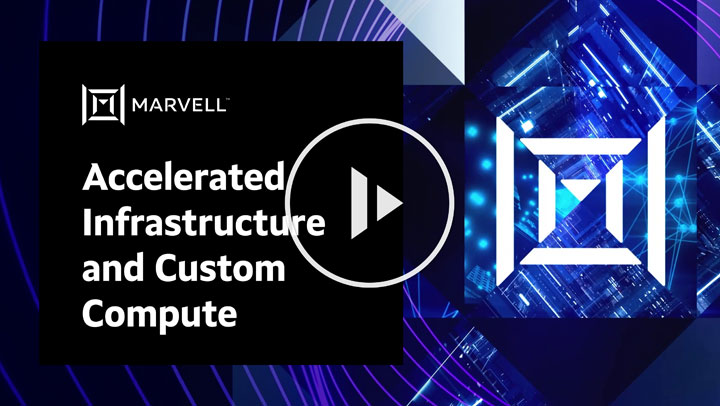

Open Networking is not a new concept. SONiC (the Software for Open Networking) has been around for some time, and cloud-managed campus switches based on proprietary NOS (Network Operating System), are also not new. What’s truly novel is the comprehensive solution that finally brings open-source SONiC to the campus networks and adds to it a layer of cloud management and zero trust provisioning, all running on a cost-optimized hardware platform specifically tailored to campus networks: “Cloud Managed Enterprise” or CME.
In recent years, Open Networking offered the hyperscale operators the option to use open-source software on a variety of merchant silicon, providing freedom from the lockdown imposed by the big system vendors. The next challenge was to bring similar benefits to campus networks, particularly to what is now referred to as CME.
This blog will demonstrate how the Marvell ® Prestera® switches, equipped with a comprehensive Software Development Kit, along with the collaborative efforts of a vibrant industry community called OpenLAN Switching (OLS), have created this open cloud-managed solution for campus networks.
The power of a community
The first thing to recognize is that it took teamwork from multiple companies to create this open solution. Under the umbrella of the Telecom Infra Project (TIP), various companies gathered and created a working group called OpenLAN. Within OpenLAN, two sub working groups formed: OpenWi-Fi and OpenLAN Switching (OLS), which is the subgroup relevant to this discussion.
Numerous companies actively participated in the collaborative effort—Figure 1 mentions just some of them—organized according to their role in the solution.

Figure 1: Breakdown of companies involved in OpenLAN Switching
By Reza Eltejaein, Director, Product Marketing, Marvell
Manufacturers, power utilities and other industrial companies stand to gain the most in digital transformation. Manufacturing and construction industries account for 37 percent of total energy used globally*, for instance, more than any other sector. By fine-tuning operations with AI, some manufacturers can reduce carbon emission by up to 20 percent and save millions of dollars in the process.
Industry, however, remains relatively un-digitized and gaps often exist between operational technology – the robots, furnaces and other equipment on factory floors—and the servers and storage systems that make up a company’s IT footprint. Without that linkage, organizations can’t take advantage of Industrial Internet of Things (IIoT) technologies, also referred to as Industry 4.0. Of the 232.6 million pieces of fixed industrial equipment installed in 2020, only 10 percent were IIoT-enabled.
Why the gap? IT often hasn’t been good enough. Plants operate on exacting specifications. Engineers and plant managers need a “live” picture of operations with continual updates on temperature, pressure, power consumption and other variables from hundreds, if not thousands, of devices. Dropped, corrupted or mis-transmitted data can lead to unanticipated downtime—a $50 billion year problem—as well as injuries, blackouts, and even explosions.
To date, getting around these problems has required industrial applications to build around proprietary standards and/or complex component sets. These systems work—and work well—but they are largely cut off from the digital transformation unfolding outside the factory walls.
The new Prestera® DX1500 switch family is aimed squarely at bridging this divide, with Marvell extending its modern borderless enterprise offering into industrial applications. Based on the IEEE 802.1AS-2020 standard for Time-Sensitive Networking (TSN), Prestera DX1500 combines the performance requirements of industry with the economies of scale and pace of innovation of standards-based Ethernet technology. Additionally, we integrated the CPU and the switch—and in some models the PHY—into a single chip to dramatically reduce power, board space and design complexity.
Done right, TSN will lower the CapEx and OpEx for industrial technology, open the door to integrating Industry 4.0 practices and simplify the process of bringing new equipment to market.
Copyright © 2025 Marvell, All rights reserved.
